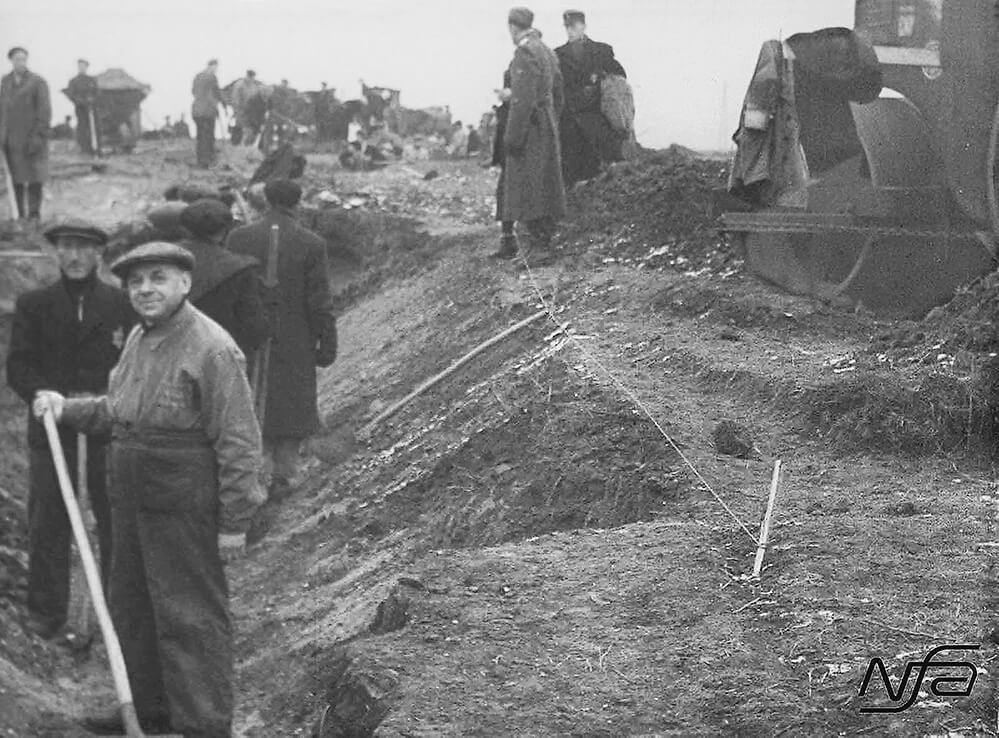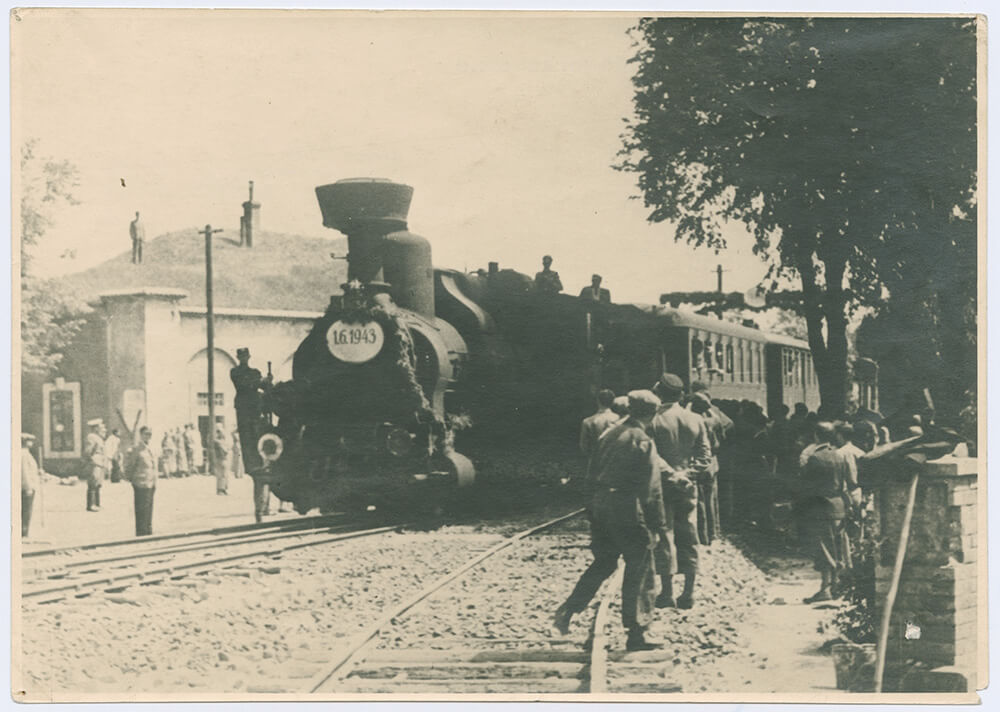Terezín railway siding (Anschlussbahn in Theresienstadt)

Terezín ghetto prisoners at work on the construction of the railway siding in the autumn of 1942.
National Film Archive, PragueOne of the reasons why the occupation authority selected the fortress town of Terezín for the “ghettoizing” of the Jewish population was because it was located near a railway track. Jews arriving on passenger trains at the Bohušovice nad Ohří station had to disembark and were sent on foot to the Terezín ghetto. Deportations to the East began in January 1942. The prisoners had to walk the several-kilometre journey back to the railway station, where they were put on trains. The construction of a 2.5-kilometre branch line began in August 1942. Passenger and freight trains were dispatched from the Bohušovice nad Ohří station directly to the Terezín ghetto from 1 June 1943 onwards. As well as enabling the transportation of materials and goods, the SS leadership sought primarily to increase the isolation of Terezín prisoners from the surrounding world. The length of the railway track in the ghetto made it possible to store up to 15 wagons there. From this siding, more than 36,000 Terezín prisoners and almost 1,200 Białystok children were deported to the Auschwitz–Birkenau camp. The arrival of at least 126 wagons carrying prisoners on evacuation transports marked the final sad chapter in the history of the Terezín railway siding.
